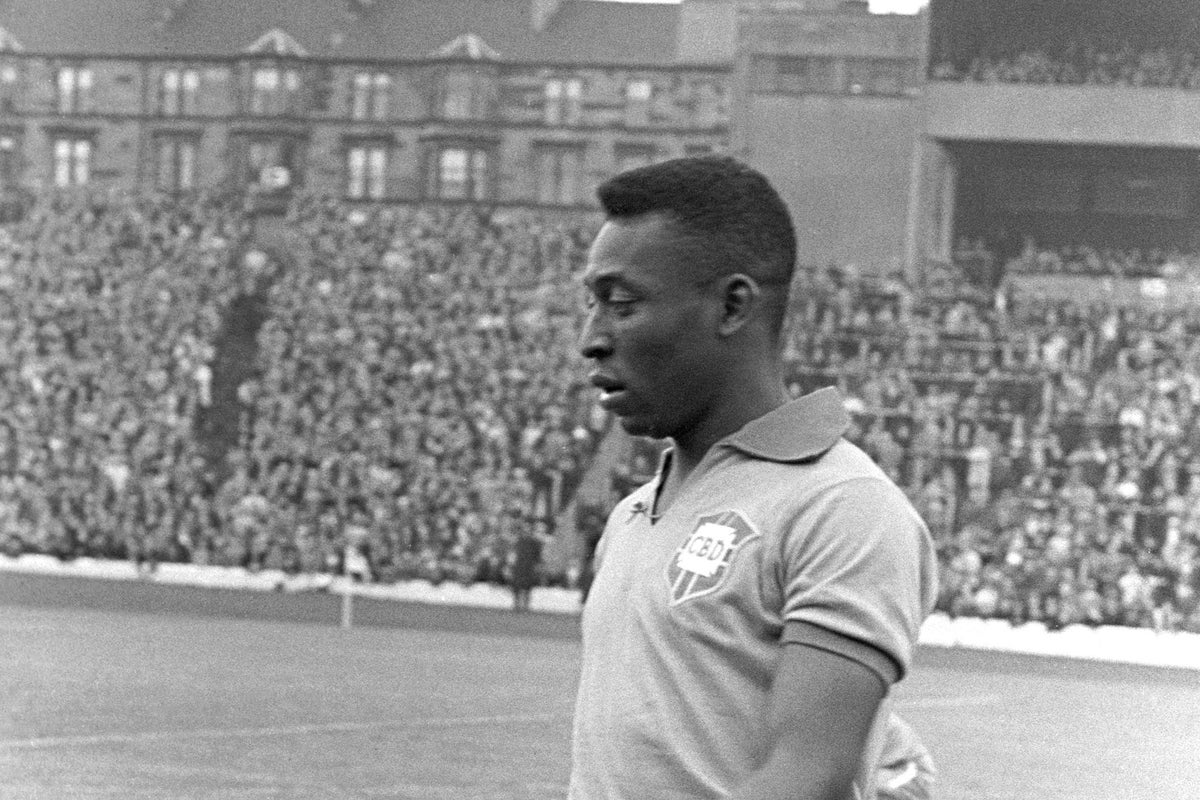
“Football is the beautiful game,” Pele once proclaimed in an attempt to encapsulate the universal appeal of his lifelong passion. And no man did more to justify that simple but compellingly eloquent description than the great Brazilian himself.
In the decades since his galvanising displays in the 1958 World Cup finals, the name of the one-time street urchin who exchanged childhood poverty for global fame has been a byword for ultimate sporting excellence.
Pele was that hitherto mythical being, the complete player; he was a sublime performer without any perceivable flaw, an unsurpassable fusion of artistry and athleticism, audacity and grace.
Further, he offered an extra dimension, one that utterly eluded the brilliant but unwholesome Argentinian, Diego Maradona, for so long his only realistic rival for the title of the finest footballer who ever lived.
Although he was a fearsomely hard competitor, Pele exuded dignity, radiated his overwhelming joy at playing his beloved game, rejected arrogance. Even when moved to remark that he was born for football as Beethoven was for music, it was said without apparent conceit. And it was true.
Pele transcended statistics, but his are so phenomenal that they demand emphasis. During a 21-year career, he is said to have scored 1,283 goals in 1,363 senior matches for clubs and country - albeit that included tour matches and unofficial friendlies; he earned three World Cup winner’s medals, as a 17-year-old in 1958 when his precocious flair ensured instant celebrity, a second in 1962, although he missed the latter part of the tournament through injury, and a third in 1970 when his incomparable skills were in full flower, facilitating mesmeric feats of originality.
He inspired his only major Brazilian club, Santos, to 11 Sao Paulo state titles, six Campeonato Brasileiro Série A crowns, two Copa Libertadores triumphs and two world club championships; he won the United States Soccer Bowl with New York Cosmos; there were knockout trophies galore and a collection of personal awards, including several as athlete of the 20th century, far too numerous to mention.

So what made him special, this slightly splay-footed inside-forward who, at 5ft 8in, was physically dwarfed by most of the men who sought in vain to mark him? Just that he was unassailably magnificent at every aspect of the game.
As the late Joao Saldanha, a former coach of the Brazilian team, once put it, “If you ask me who is the best full-back in Brazil, I will say Pele; if you ask me who is the best half-back or the best winger, then again I will say Pele. He is probably even our best goalkeeper. He is like no other footballer has been or is likely to be.”
His control of the ball was magical, with virtually any part of his body and whether he was stationary or moving at full tilt; he was elastically agile and endowed with searing pace
To break it down: his control of the ball was magical, with virtually any part of his body and whether he was stationary or moving at full tilt; he was elastically agile and endowed with searing pace; his vast strength enabled him to shield the ball from vigorous challenges and, though often depicted erroneously as near-saintly, he could be abrasively aggressive when necessary; his courage was unquestionable, his stamina boundless and his balance superb.
A natural right-footer, he honed his left-foot skills to match, and his timing in the air was peerless. He was an uninhibited passer, capable of driving, floating, curling or spinning the ball with astonishing accuracy; he finished lethally, from virtually any angle or distance.
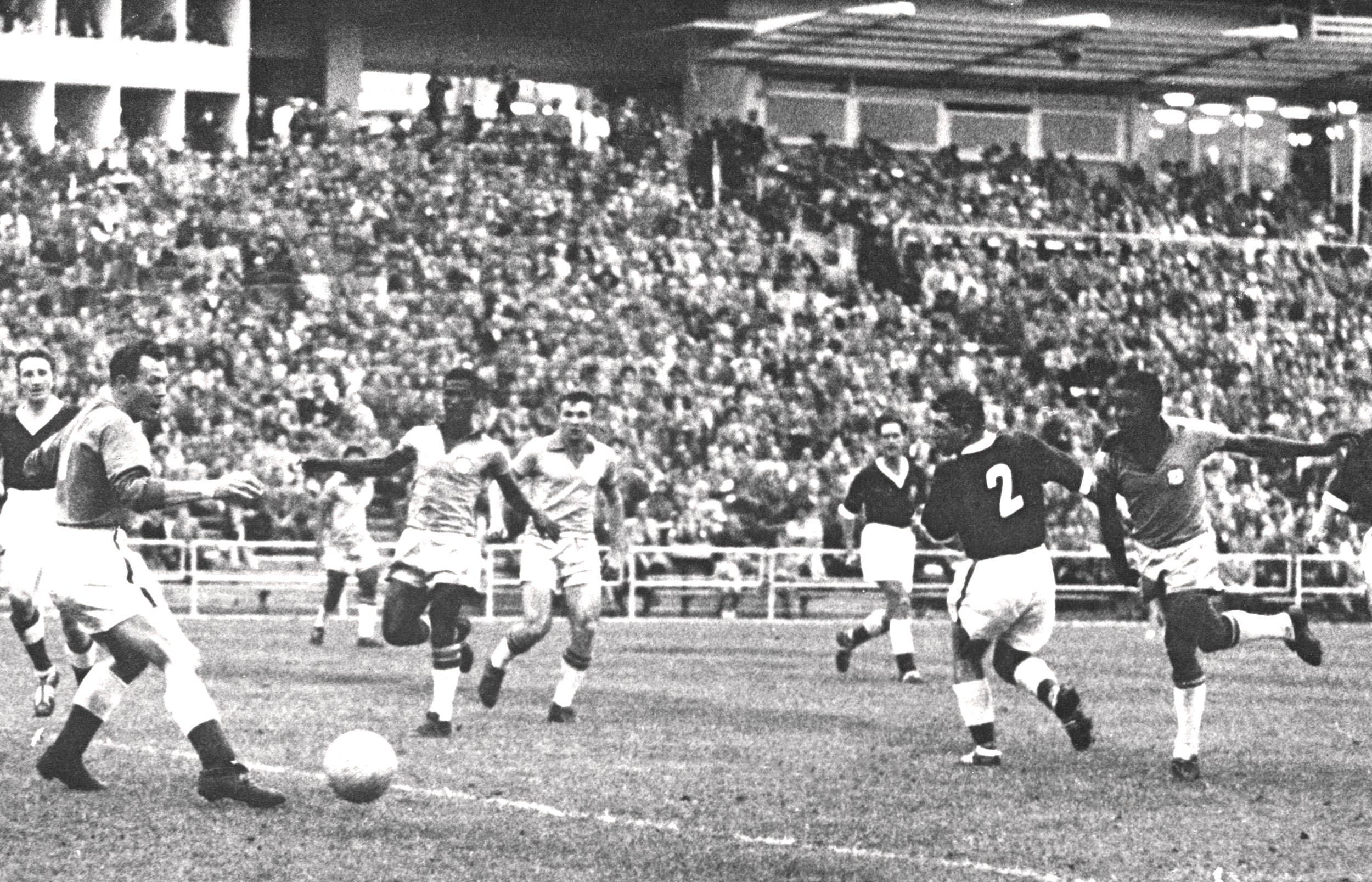
As if all that was not enough, it was topped by intelligence, imagination and, perhaps the most destructive of all his myriad assets, an instinctive capacity for the unexpected. Pele had the knack of bamboozling defenders with a sudden shot, dribble, pass or off-the-ball run; one minute he might take possession in an apparently non-menacing position, the next he would deposit it impudently into the opposition’s net.
He was born Edson Arantes do Nascimento in the small, shabby township of Tres Coracoes, moving to a ramshackle street in Bauru in the state of Sao Paulo when he was four because his father, a professional footballer known as Dondinho, was signed by the local club.
His mother, Dona Celeste, railed against the sport because her husband barely scraped a living from it and it had inflicted on him a painful lifelong limp. She equated football with hardship and heartache, and she wanted better for her two sons, Dico (as Pele was known as a child) and Zoca.
But she had a problem. Dico, in particular, was in love with the game and, playing in the dusty streets, using a sock stuffed with rags and paper as a ball, he revealed prodigious raw ability.
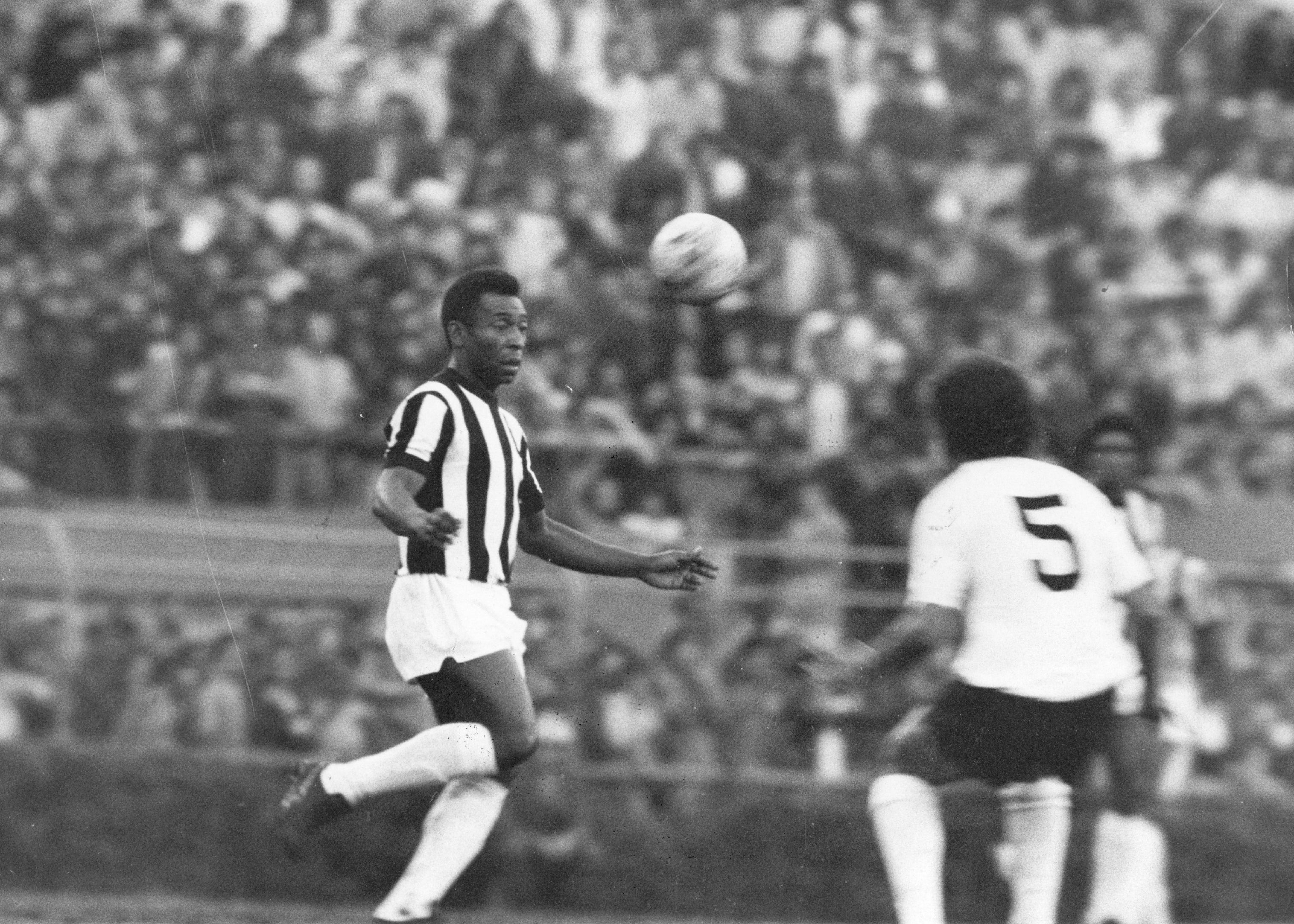
After evolving into Pele around the age of 10 – he hated the name at first, fighting anyone who used it, and never discovered what it meant or how it originated - he developed rapidly as a footballer while augmenting the meagre family finances by working as a shoeshine boy.
By the age of 13, in 1954, he was sparkling for local junior sides and being coached by the former Brazilian international Valdemir de Brito, who engineered his move to the ambitious Santos club, near Sao Paulo, two years later.
At that point, Pele cut a scrawny figure and was placed on a weight-inducing diet, yet still he was an overnight sensation in the big league, scoring on his debut against Corinthians and finishing his first full season as the state’s top scorer with 32 goals.
He developed rapidly as a footballer while augmenting the meagre family finances by working as a shoeshine boy
In July 1957 the fairytale gathered pace when he was awarded his first Brazil cap at 16 and he responded with a goal in a 2-1 defeat by Argentina. That sparked a nationwide debate over whether the wunderkind should be plunged into the 1958 World Cup finals in Sweden, or be held back until he had matured.
Coach Vicente Feola’s decision was rendered more difficult because Pele had suffered a knee injury that demanded prolonged treatment with scalding hot towels, but he decided that it would be madness to suppress such a wondrous talent and the 17-year-old became the youngest man to play in the World Cup finals, a record which stood until 1982, when it passed to Norman Whiteside of Manchester United and Northern Ireland.
Pele’s impact was of seismic proportions. After drawing a blank in his first game against the Soviet Union, he scored the only goal of a tense quarter-final encounter with Wales, plundered a scintillating hat-trick against France in the semi-final and then struck twice more as Sweden were eclipsed 5-2 in the final.
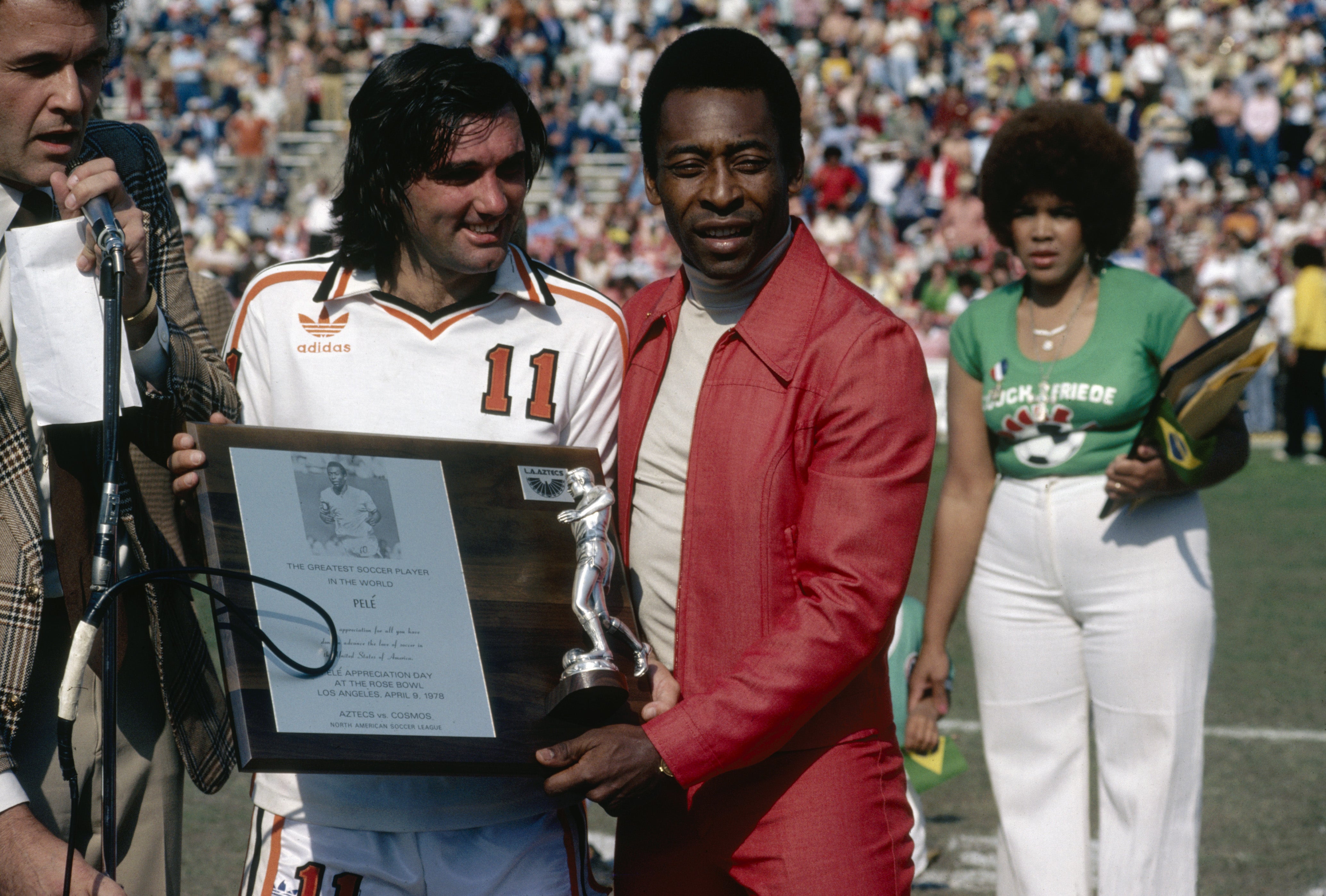
His first goal – for which he caught a cross on his thigh then hooked the ball over his marker before swivelling to volley spectacularly past the keeper – was hailed as a classic and confirmed his arrival on the world stage.
Celebrated teammates such as Didi, Garrincha, Vava and Zagalo had also contributed hugely to Brazil’s first World Cup win, but Pele was the ultimate symbol of their new supremacy.
Now began a hectic period in which the teenage messiah underlined his unique quality by continuing to score freely - the phrase seems barely adequate to describe his 126 senior goals during 1959 - and Santos cashed in on his celebrity by hitting the road like a footballing version of the Harlem Globetrotters, their brutally demanding tour schedules financing the influx of other top players who helped them to secure the world club championships of 1962 and ’63.
Inevitably, Italian and Spanish clubs made astronomical bids to sign Pele but his employers could not be tempted. Indeed, he was viewed as a national treasure and the Brazilian Congress vetoed any transfer.
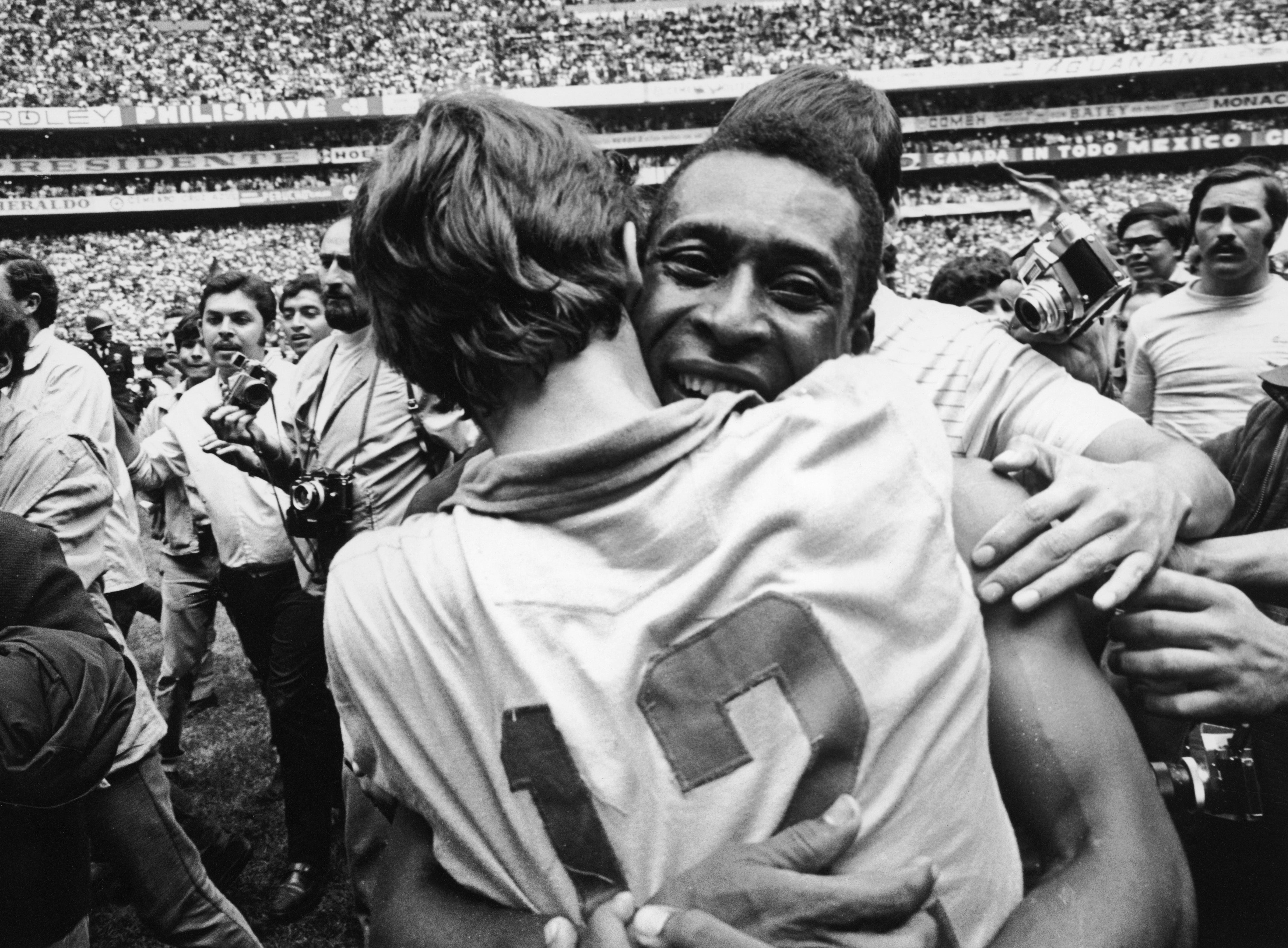
However, although the lucrative Santos circus continued throughout the 1960s, the decade was to bring excruciating World Cup frustration for their leading light, who began to exhibit signs of wear and tear through the strain of playing up to 100 games a year.
In Chile in 1962, after scoring a splendid solo goal in the opener against Mexico, he suffered an injury that kept him out as Brazil retained their title in his absence.
Italian and Spanish clubs made astronomical bids to sign Pele but his employers could not be tempted. Indeed, he was viewed as a national treasure and the Brazilian Congress vetoed any transfer
More distressing still, in England four years later when he should have been in his pomp, he was effectively kicked out of the World Cup, the victim of savage man-marking by Bulgaria and, in particular, Portugal.
The brutalised Brazilian was left to limp away from the action in his last game, at Goodison Park, huddled forlornly in a raincoat as his team bowed out, and although he was no angel when it came to looking after himself physically - he had learned long ago the necessity of standing up to bullies - he deserved far more protection from referees during that tournament.
He remained resilient, however, bouncing back to score heavily for Santos, helping to win five major club prizes in 1968 and passing the extraordinary milestone of his 1,000th senior goal against Vasco de Gama at the giant Maracana stadium in Rio de Janeiro in 1969.
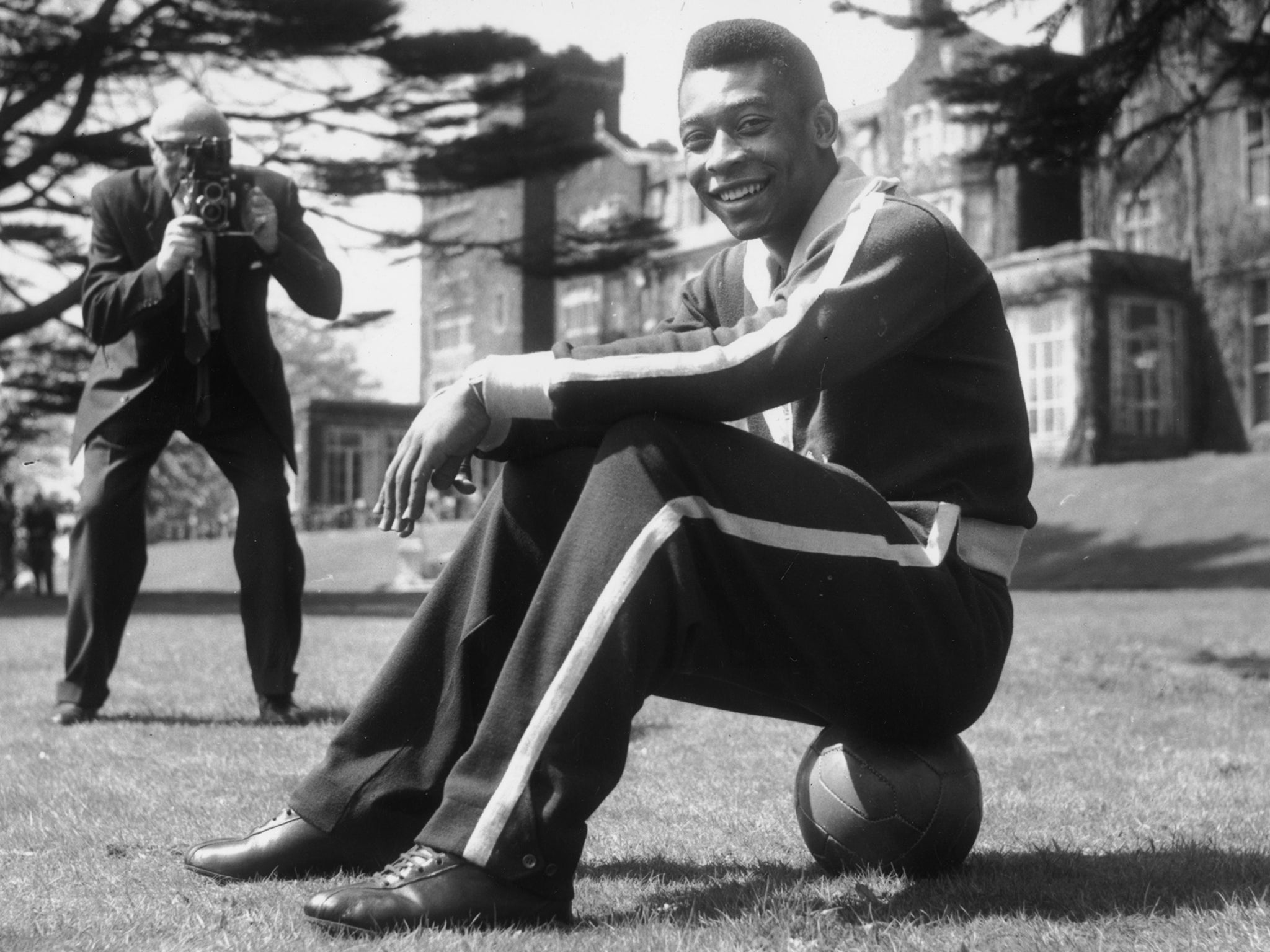
Yet the hurt of his callous treatment in 1966 was still keen and he declared initially that, though he would be only 29 at the time of the next finals in 1970, he would not take part in Mexico.
Happily, he relented under constant pressure, and gave a series of breathtaking performances as an illustrious side which also featured Rivelino, Gerson, Tostao, Jairzinho and Carlos Alberto, lifted the Jules Rimet trophy for the third time in Brazil’s history.
The tournament furnished a succession of deathless Pele images: the snap-shot from halfway which drifted a yard wide of a Czechoslovakia post and the glorious volleyed goal in the same game; an outrageous dummy which allowed the ball to run one side of the Uruguay goalkeeper while he swivelled past on the other; the epic personal duel with Bobby Moore which ended in embrace and the swapping of shirts after England had lost 1-0; the bullet header from which Gordon Banks made a famous plunging save; the adroitly nodded goal in the 4-1 final victory over Italy. It all added up to the shimmering climax of Pele’s international career, which finally closed with a draw against Yugoslavia in 1971.
Thereafter, the ceaseless Santos workload continued and he showed considerable loyalty in turning down tempting offers from European clubs, including Real Madrid. But although he had made plenty of money through business dealings down the years, Pele had known serious financial difficulties, too.
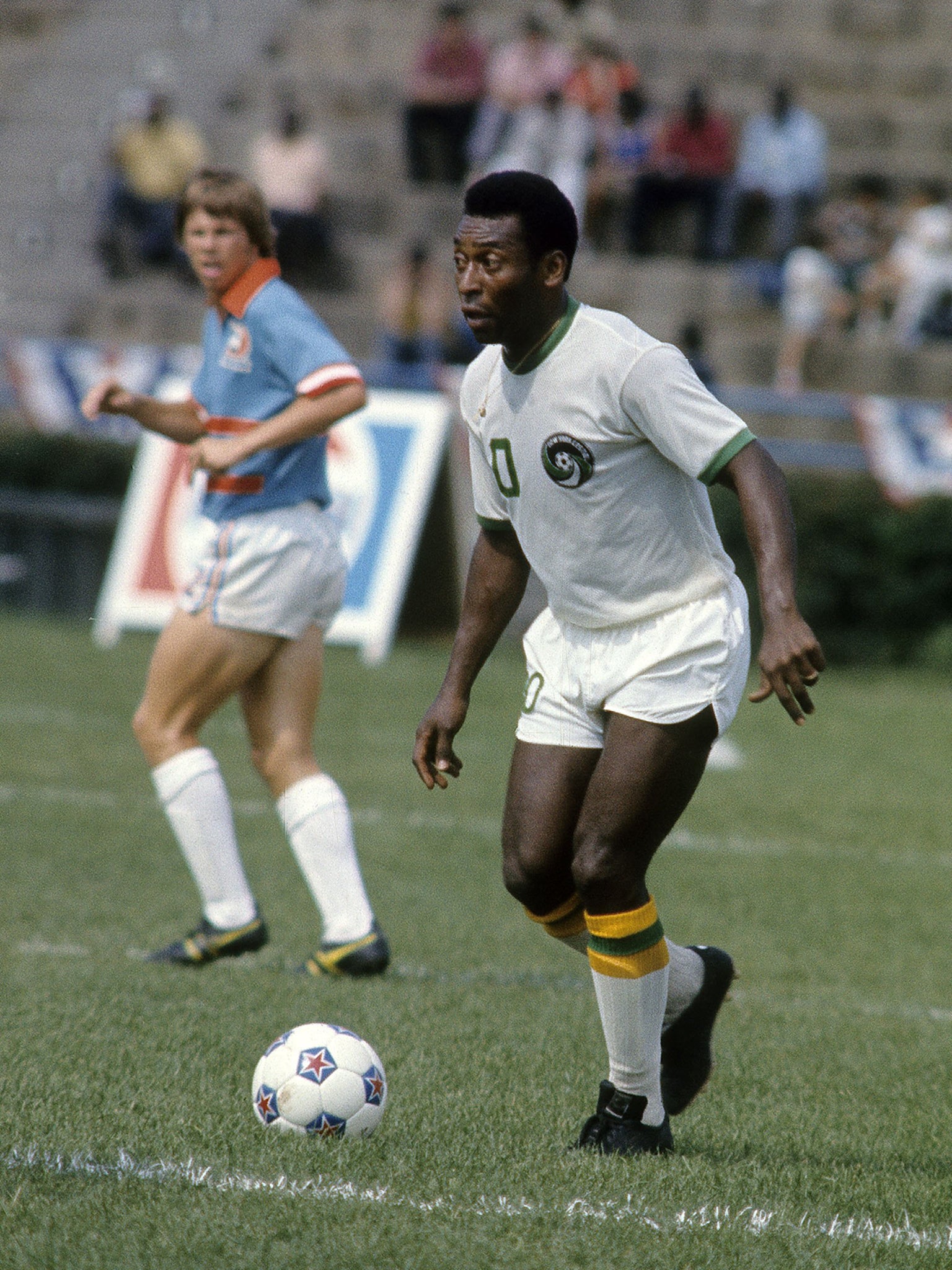
In the late 1960s he had been on the brink of bankruptcy and in the early 1970s, even as he worked towards the formation of a players’ union to prevent exploitation by administrators, he experienced further problems.
So, soon after retiring from Santos in 1974, he accepted an offer to join New York Cosmos which enabled him to clear his personal debts. Many fans in Brazil felt betrayed at first, but he negotiated benefits for his homeland, such as a football school for poor Santos children and coaching exchanges with the US.
His arrival gave a massive boost to the American game, helping to establish it at grassroots level, and subsequently he was instrumental in the country’s successful bid for the 1994 World Cup finals.
On the pitch, he experienced an average first season, but in 1976 he performed upliftingly, voted the North American Soccer League’s most valuable player, and in 1977 he finished by inspiring Cosmos to triumph over Seattle in the Soccer Bowl final.
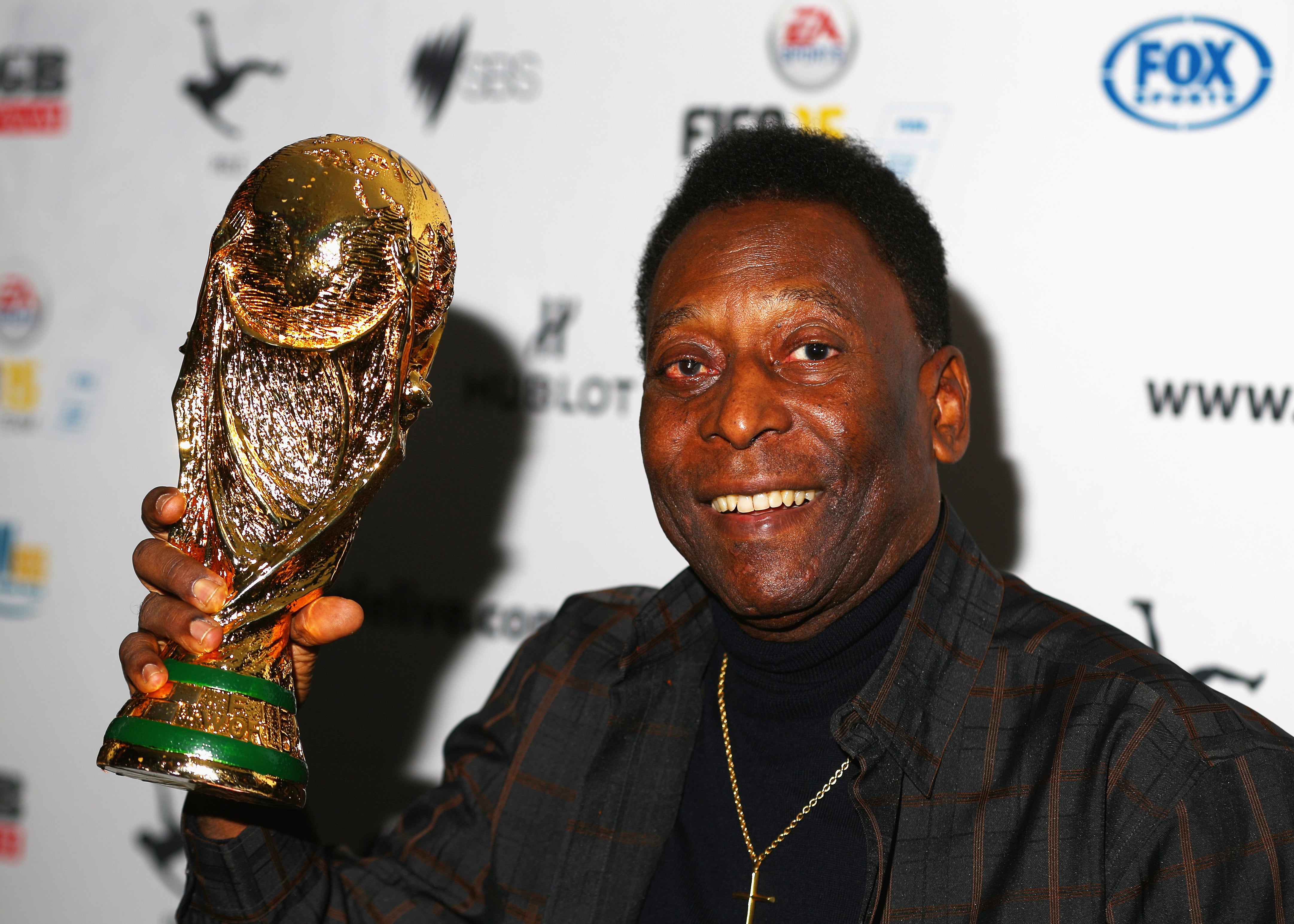
After his retirement, Fifa, the world game’s governing body, appointed Pele as their roving ambassador, and such was his enduring charisma that his arrival in Africa caused a two-day truce in the Biafra-Nigeria war so that everyone could watch him play in an exhibition match.
There followed years of charity work while making a living in business before he was appointed as Brazil’s sports minister in 1994. His ambition was to eradicate corruption in the sport by pushing through a series of radical reforms, but it did not prove easy, and he resigned in 1998 recognising that the job was not complete.
Still, he remained a colossal presence in world football, campaigning against the use of drugs, although he did become the poster star for Viagra as part of a campaign to raise global awareness of erectile dysfunction.
All the while he continued to oppose the game’s rampant commercialism, criticising the vast social divide in his country, and always championing the cause of youth. The most feted player of all time, Pele understood the power of his reputation and he applied it benevolently. His eminence was utterly deserved.
Edson Arantes do Nascimento (Pele), footballer, born 23 October 1940, died 29 December 2022







